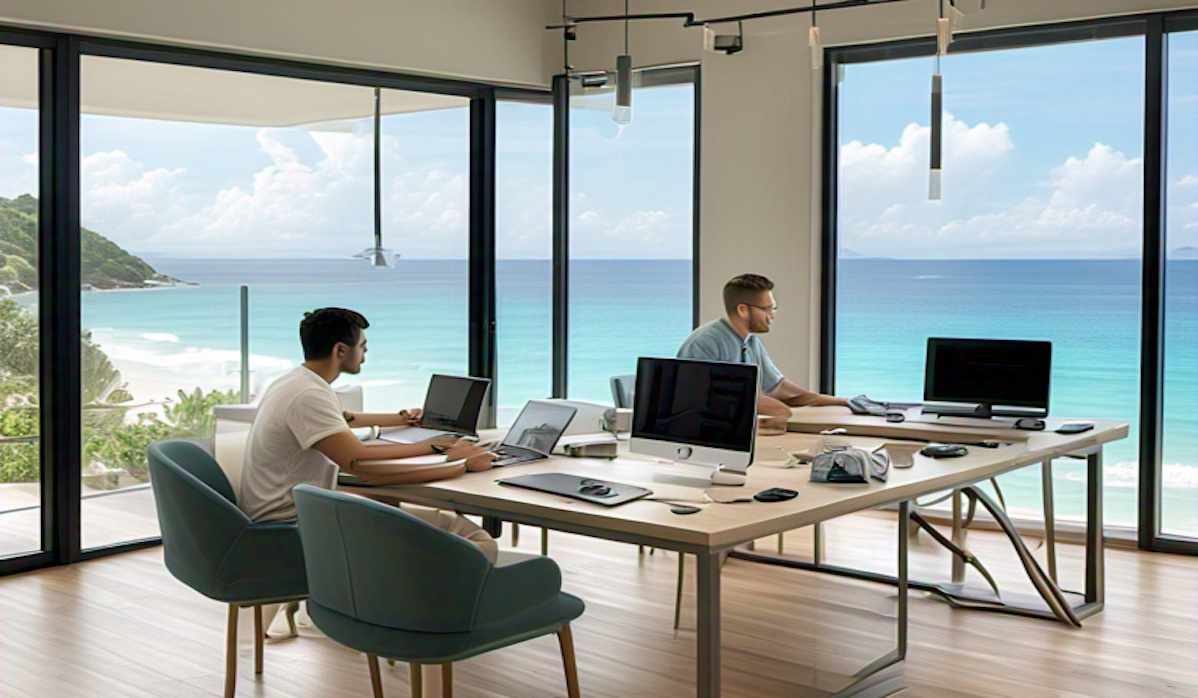Tarun Karthick
Campbell Bay, 04 December 2024
Goa’s Tourism Minister, Rohan Ashok Khaunte, recently appeared on the popular ‘ANI Podcast with Smita Prakash’, where he shared an innovative vision for the state’s tourism landscape. During the discussion, Mr. Khaunte proposed the creation of co-working spaces on Goa’s beaches, blending work and leisure for digital nomads and remote workers.
He described the concept as a vibrant setup where individuals could work from beachside co-working spaces, enjoy water sports, and unwind with snacks or drinks at nearby shacks before resuming their tasks. This unique model promises to attract a global audience of digital nomads seeking reliable high-speed internet and serene work environments.
This vision closely aligns with a suggestion by Nicobar Times, which in June 2024, published a story titled “Work from Andamans: Develop Amenities for Long-Term Remote Workers to Make Andamans a Year-Round Destination.” The article highlighted how enhancing beachside amenities for remote workers could transform the Andaman and Nicobar Islands into a sought-after, year-round destination.
While Goa takes steps to implement these ideas, the Andaman and Nicobar Islands have an unparalleled opportunity to create a unique offering for remote workers. Great Nicobar, for example, boasts pristine beaches, tranquil surroundings, and untouched natural beauty—ideal for digital nomads seeking long-term stays.
Though unavailability of easily accessible & affordable air travel and the long 40-hour ship journey to Great Nicobar are bottlenecks for traditional tourism development, these challenges are less significant for digital nomads. Their longer stays and willingness to endure such travel in exchange for peace and productivity make them a perfect fit for the island.
Developing co-working spaces on Great Nicobar’s beaches, such as at B-Quarry, could act as a catalyst for tourism while demonstrating the potential for similar developments across other islands.
Locations like Little Andaman and locations across the North and Middle Andaman district—especially those connected by the CANI Submarine Optical Fiber Cable—are also excellent candidates. These regions combine breathtaking natural beauty with reliable internet connectivity, making them prime choices for digital nomads and remote workers.
The development of beachside co-working spaces could revolutionise the Andaman and Nicobar Islands’ economy, drawing tourists who contribute to sustainable, year-round revenue. Targeted marketing campaigns highlighting the unique blend of professional productivity and serene natural beauty would attract domestic and international tourists alike.
Collaboration between the Andaman and Nicobar Administration and tourism stakeholders is crucial to ensure that initiatives are taken to attract digital nomads and remote workers to the Islands. With strategic planning, the Islands can position themselves as a top destination for remote work tourism, staying competitive with states like Goa and carving a distinct identity in this niche market.

